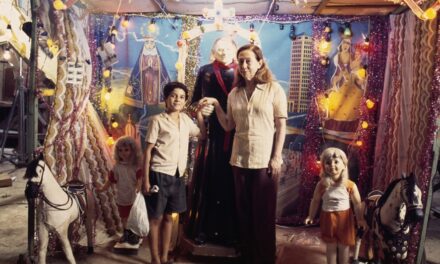By Laís Oliveira | Translation: Isabela Jordão
 Brazil was the last country in the American continent to abolish slavery and, unfortunately, this historical heritage is still present more than a century later, when we verify the data. In this country, even though they represent the largest labor force, blacks and browns (classification used by the Brazilian Institute of Geography and Statistics, or IBGE) are more affected by unemployment and earn little more than half of the earnings of white workers in the country.
Brazil was the last country in the American continent to abolish slavery and, unfortunately, this historical heritage is still present more than a century later, when we verify the data. In this country, even though they represent the largest labor force, blacks and browns (classification used by the Brazilian Institute of Geography and Statistics, or IBGE) are more affected by unemployment and earn little more than half of the earnings of white workers in the country.
According to the most recent (2019) data from IBGE, of the 12.8 million unemployed in Brazil, 65.7% are black. Data from the National Continuous Household Survey (PNAD, in Portuguese initials), released in November 2019, point out that 8.2 million of the 12.8 million unemployed in Brazil are black or brown – this is equivalent to two out of three unemployed in the country. The unemployment rate among this section of the population reached 14.6%, against 9.9% of white workers; in addition, the proportion of blacks and browns with a formal contract is lower than that of whites (71.3% against 75.3%).
Even though it corresponds to 66% of the country’s domestic workforce, unemployment is higher in this portion of the population and, in addition to these alarming data, it was found that, even in the 21st century, blacks and browns also receive less than white workers. Historical social differences generate a wage gap of 31% between blacks and whites – in part because blacks and browns have less access to good schools and then, can’t reach good jobs.
Also according to IBGE data, black and brown workers receive, on average, R$10.1 per hour worked in Brazil. Among whites, this value is R$17 per hour. The result of this is a much lower income of blacks at the end of the month, compared to whites, since informal work pays less than formal work. On average, the black worker receives R$1,608 per month – just 57.5% of the average income of the white worker, of R$2,796 per month.
And what does this data reflect?
The survey carried out by IBGE shows how much social inequality is still present in Brazil. It is reflected in all fields: financial, opportunities in the job market, access to education and leisure, good living conditions, among other data. For IBGE’s work and income coordinator, Cimar Azeredo, inequality in the Brazilian labor market comes from the country’s colonization and needs to be eradicated or reduced as soon as possible. “We are talking about a population of African descent, who entered the country through slavery.
In more than 100 years of liberation from slaves, this research shows that there is still significant inequality in the country”, said Azeredo. “Among the several factors that influence these data are the lack of experience, schooling, and the formation of a large part of the population of black or brown color. Many do not have access to school, quality education, and higher education, and this has different consequences”, he added.
Unfavorable market, more informality
 The survey also pointed out that the proportion of black and brown employees with a formal contract is 71.3%, lower than the 75.3% registered among whites. With an unfavorable market, many move to informality to earn money and survive. According to IBGE, a quarter (25.2%) of all black or brown workers worked as a street vendor in the third quarter of this year.
The survey also pointed out that the proportion of black and brown employees with a formal contract is 71.3%, lower than the 75.3% registered among whites. With an unfavorable market, many move to informality to earn money and survive. According to IBGE, a quarter (25.2%) of all black or brown workers worked as a street vendor in the third quarter of this year.
How to get to the job market to compete equally with the white and privileged population if education is not the quality for those with few resources? Proof of this lack of experience in jobs and occupations that require higher education is that, according to the survey, the occupation of the black and brown population exceeded that of the white population in four of the ten activity groups surveyed by the institute: agriculture, construction, accommodation and food services and, mainly, domestic services.
The need for public policies in Brazil and quality education for all
In Brazil, the inheritances of social inequalities accumulate throughout its historical formation. One of the main examples of this fact can be seen in the way that blacks were excluded from the labor market right after the post-slavery period. This process of social exclusion through race meant that blacks were marginalized and pushed to situations of poverty and misery that are still perpetuated today and seen in the peripheries, slums, and hills of the country.
Despite the economic development that occurred after the president Fernando Henrique Cardoso administration, inequalities have not diminished, and make life difficult for Brazilians today. It would be naive to think that changes would occur quickly and effectively, but for that to happen it is necessary to create universal policies and policies focused on the intention to alleviate the problems generated by inequality.
According to “Todos pela Educação” (All for Education) movement, the lack of quality education is what increases this inequality, as whites concentrate the best indicators and are the portion of the population that attends school the longest. And the most vulnerable students are those who have access to schools with the worst infrastructure and education.
“If we have a historic debt to the black population, it is not enough just to have equal rights, it is no use just giving equal rights to blacks and browns, we have to have specific policies initially in basic education”, said the president of the Todos pela Educação movement, Priscila Cruz. In this context, it is necessary to provide better schools for the black and brown population since elementary school and, further ahead, places at the public university. Only education will be able to break the cycle of exclusion and poverty in which they have been trapped for generations.
*This article was originally written before the pandemic.













